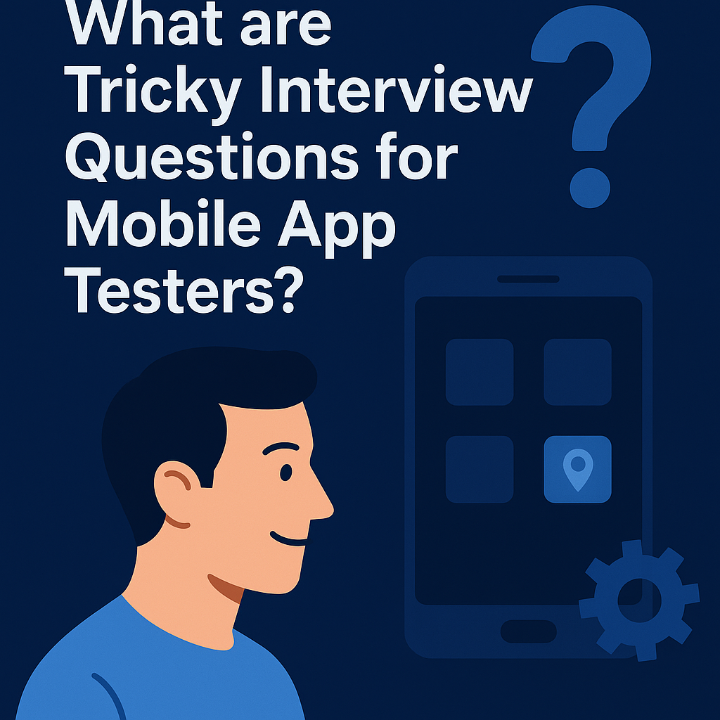 INTERVIEW QUESTIONS
INTERVIEW QUESTIONS What are Tricky Interview Questions for Mobile App Testers?

Introduction
Mobile app testing isn’t easy—thousands of devices, screen sizes, OS versions, and user behaviors. That’s why interviewers often ask tricky, scenario-based questions to test how you think, not just what you know. Here’s a list of some real tricky questions you might face in 2025 interviews and how to answer them confidently:
Common Tricky Questions
1. You only have one day to test an app before release. What do you do?
Answer: Prioritize critical flows: login, payments, navigation, and crashes. Show you know risk-based thinking.
2. The app crashes only on one device model. How do you approach it?
Answer: Talk about device fragmentation, cloud device labs, OS-specific issues, and clear bug reports.
3. How do you test when the app must work offline or in poor network conditions?
Answer: Mention airplane mode, network throttling, caching validation and retry mechanisms.
4. The app works fine on emulator but crashes on real devices. Why?
Answer: Explain emulator limitations: hardware, sensors and performance differences. Always validate on real devices.
5. How do you test apps for foldable phones and wearables?
Answer: Focus on responsive layouts, adaptive UI, hardware compatibility, and new user gestures.
6. How do you test push notifications?
Answer: Check delivery (with app open, background, killed), action buttons, deep-links, and OS-level permissions.
7. How do you test battery consumption in a mobile app?
Answer: Monitor app using Android Profiler/Xcode Instruments, check for background tasks, and test long-running sessions.
8. What would you do if the app runs fine in your test environment but users complain in production?
Answer: Validate real-user conditions (network, device load, data volume), review logs/analytics, and reproduce with production configs.
9. How do you test in-app payments securely?
Answer: Use sandbox environments (Google Play, Apple Sandbox), test failed payments, cancellations, refunds, and edge cases.
10. How do you test app performance during peak traffic?
Answer: Use JMeter/Gatling for API load, simulate multiple concurrent users, monitor server response times, and test under stress.
11. How do you handle app testing when new OS versions are released?
Answer: Test early on beta OS releases, validate backward compatibility, and maintain a device lab/cloud testing setup.
12. What do you do if a bug is intermittent and hard to reproduce?
Answer: Collect detailed repro steps and device/environment info, use screen recording, log analyzers, and report with as much context as possible.
Extra Curveball Questions
“If logs aren’t available after a crash, how do you debug?”
Answer: Use tools like Firebase Crashlytics, Android Studio logs, or device logs.
“If a release is blocked by QA, how do you handle pressure from management?”
Answer: Show soft skills: prioritize user trust, propose partial releases, and explain risks in business terms.
“How do you test apps with location-based features?”
Answer: Use GPS simulators, mock locations, and real-world movement testing.
Key Takeaways
These tricky questions aren’t about “catching you out”—they are about seeing if you can think critically, prioritize effectively, and balance technical + soft skills. Always frame answers with a real-world approach and tie them back to user experience and quality.